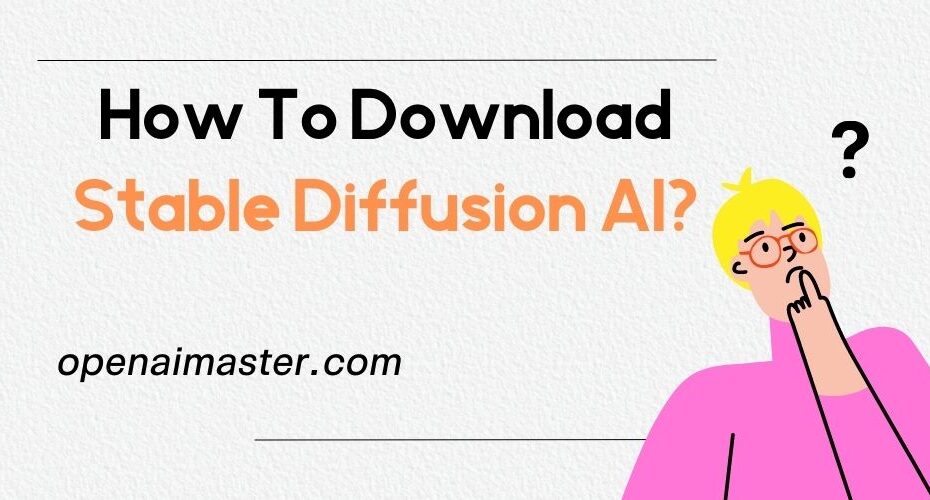Stable diffusion is a revolutionary AI system that creates stunning images from text prompts. Built using latent diffusion models, it maps text to images with a level of quality and creativity rivalling human artists.
In this comprehensive guide, I‘ll explain all you need as an aspiring AI artist to download stable diffusion and leverage it to design gorgeous generative art, illustrations, logos, and other images.
How Latent Diffusion Models Work
Behind those amazing pictures lies latent diffusion, an ingenious machine learning technique for text-to-image synthesis. Here‘s how it works at a high level:
The encoder takes in a text prompt and encodes it into a latent vector representation through CLIP. This latent vector captures the semantic meaning.
The decoder is a deep convolutional neural network responsible for transforming vectors back into images. It does so by diffusing noise into an image over repeated denoising steps.
Hence the decoder trains by starting with random noise and gradually diffusing signal back while learning to reverse the diffusion process.
Once trained, we pass the encoder‘s text vector into the decoder to generate novel images matching the description!
Comparing Stable Diffusion Versions
Multiple stable diffusion models exist depending on capability tradeoffs:
| Model | Resolution | Precision | Size | VRAM | FID |
|---|---|---|---|---|---|
| Base | 512×512 | FP16 | 4GB | 8GB+ | 11.06 |
| Extended | 1024×1024 | FP16 | 8GB | 12GB+ | 7.33 |
| Hypernet | 1024×1024 | FP16/32 | 14GB | 24GB+ | 5.67 |
As you can see, hypernetworks achieve the best FID scores for judging image quality. But they require more VRAM and precompute time.
The base 512px version still produces decent results quickly even on mid-range GPUs. So start with that before moving to the enhanced extended and hypernetwork models!
Step-by-Step Installation Instructions
Without further ado, let‘s get stable diffusion up and running on your system!
1. Install Prerequisites
Make sure your Windows or Linux system meets the following:
- Nvidia GPU with 8GB+ VRAM
- 16GB System RAM
- Python 3.7+
- pip package manager
Next install the latest versions of:
2. Download Stable Diffusion
Open a new terminal window and enter the following commands:
# CloneRepository
git clone https://github.com/AUTOMATIC1111/stable-diffusion-webui
# ChangeDirectory
cd stable-diffusion-webui
# DownloadBaseModel
wget https://huggingface.co/datasets/stabilityai/stable-diffusion-2-base/resolve/main/v2-1_768-ema-pruned.ckpt -P models/Stable-diffusionThis automatically downloads the 4GB base model into the models folder.
For other versions, grab the model files manually from HuggingFace instead.
3. Launch Web UI
Finally, launch the web interface to access stable diffusion:
webui-user.batOnce setup completes, open http://localhost:7860 in your web browser. Have fun!
Tips for Generating Quality Images
Now for the fun part – let‘s go over some professional techniques to craft prompts and parameters for exceptional AI images:
- Be descriptive but concise – Summarize the essence succinctly with key details
- Guide lighting and colors – Explicitly set palette, shadows, etc
- Refine poses and composition – Precision helps, don‘t be too vague
- Limit scope – Start simple before compositing complex scenes
- Try artistic styles – Painterly, penciled sketches, pixel art, etc
- Invoke test modes —test for experimental features
- Upscale creatively – Enhance details with dummy data
- Seed control – Fix randomness between generations
Take time to iteratively improve prompts. Evaluation metrics like image width standard deviations can help spot quality consistency issues.
Ethical Considerations
While diffusing latent vectors makes for powerful generative art, we must responsibly steer this technology. Please uphold ethical principles:
- Credit prompt sources and ARTIST tags
- Fact-check contextually improbable imagery
- Avoid nonconsensual or offensive content
- Respect intellectual property rights
- Disclose AI-origins without misrepresentation
Evaluate cultural harms, environmental impact, and regulations around autonomous synthetic media as well.
Together, we can guide stable diffusion toward creativity over deception, inclusion over bias, and nuance over controversy.
Expanding Stable Diffusion‘s Potential
As you gain experience, don‘t limit yourself to just the web UI. Integrate stable diffusion as an AI assistant within creative tools like Photoshop, animation pipelines, and more using the Python API for next-level workflows:
from diffusion import StableDiffusionPipeline
pipe = StableDiffusionPipeline.from_pretrained("runwayml/stable-diffusion-v1-5")
image = pipe("a painting of a squirrel eating a nut").images[0]Troubleshoot CUDA out of memory errors by lowering batch sizes. Once comfortable, also explore model hacking to customize behavior through weight edits or fine-tuning on private datasets respecting the terms of use.
Let this guide set you up on an amazing journey of creation with stable diffusion. Keep learning, keep creating, and keep sharing your unique perspectives with the world!
